|
It's #FolkloreThursday! Went for a little explore this week in the footsteps of Bigla Comyn, or Matilda Cumming, who had a big old stone 'chair' in Deishar Woods near Boat of Garten. Found a suitably armchair-like stone in the right area, so reckon this was it! She would rest here on her way through the woods to the church at Duthil, which she is said to have founded, and also sat here to collect the rents from her estate. It was apparently also used as a 'loupin'-on stane' to mount horses. There's a second stone linked with Bigla in these woods, known for many centuries as Bigla's Key Stane, where she stashed her keys when they got too heavy to carry on her way to church. It was described as being circular with a hole in the middle - possibly a bit like a quernstone. Waded through deep heather to the north of Creag an Fhithich, Raven's Crag, but sadly couldn't find this one! But, given that Bigla lived in either the early 1400s or the mid-1200s, that's not really a surprise... There's some confusion over dates probably brought about by two ladies with the same name, centuries apart. Either way, it's a pretty old story. The motte or fort mound of Tom Pitlac just outside Boat of Garten is named after Bigla - the small rounded hill of Bigla - and otherwise known as Bigla Cumming's Castle. Just another (woman) character who made their mark on the Strath, whose traces we still find today. If you'd like to hear more stories and folktales of Aviemore and the Cairngorms, join an upcoming short guided walk!
0 Comments
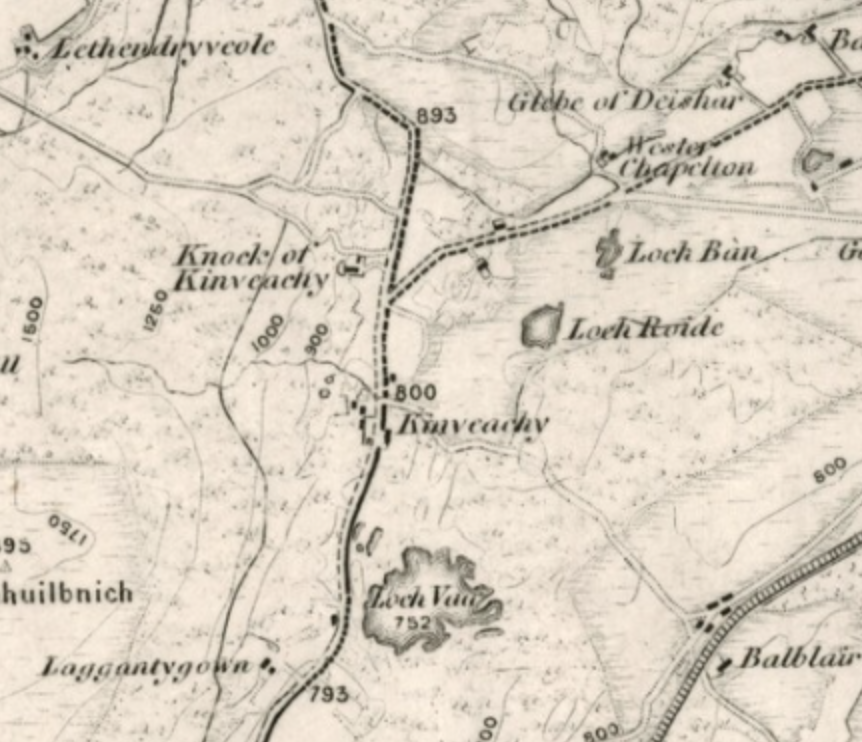 Map of Kinveachy from 1877, National Library of Scotland It's #FolkloreThursday! In the woods of Kinveachy, between Aviemore, Boat of Garten and Carrbridge, there lives a giant. He's a wise and wily giant, and, thinking that people may wish to kill him, removed his heart and hid it under a stone in Kinveachy Woods. As everyone knows, the only way to kill a giant is to destroy its heart. Now the only way to kill the Kinveachy giant would be if somebody laid their hat, or bonnet, on top of the stone where the heart was hiding. This stone became known as the Bonnet Stone. Easy enough! But the giant's heart was also wily, and whenever it saw somebody approach the stone it promptly hopped out to hide under another stone. There are many, many stones in the woods of Kinveachy so we can assume that the giant is alive and well to this day! Kinveachy means Head of the Birch Wood/Forest in Gaelic. If you'd like to hear more stories and folktales of Aviemore and the Cairngorms, join an upcoming short guided walk!
Not really #FolkloreThursday this week, more folk skills! About a month ago I ran a Storywalk with some tremendously lovely people, one of whom turned out to be Debbie Zawinski, otherwise known as the Feral Spinner. She forages material to spin when out on walks (think bits of sheep wool stuck in fences), and spins it into yarn with a stick - the simplest form of spinning. She then dyes it using foraged material, and knits it into wonderful quirky creations. Here's an example she showed me at the end of the walk: a knitted pocket dyed with materials such as nettles, yarrow, birch leaves, and various types of bark. There's so much around us which can be used, most of the year! During lockdown I set myself up with an outside fire and attempted to dye white cotton strips with dandelion root, dandelion flowers, and dock root - but lacking any decent alums or mordants (turns out they're quite important!) the results are not even worthy of this page. Lots of fun and learning was had however. :) Debbie's book 'In the footsteps of sheep: tales of a journey through Scotland, walking spinning and knitting socks' is available from a few online knitting shops. If you'd like to hear more ways of life and folktales of Aviemore and the Cairngorms, join an upcoming short guided walk!
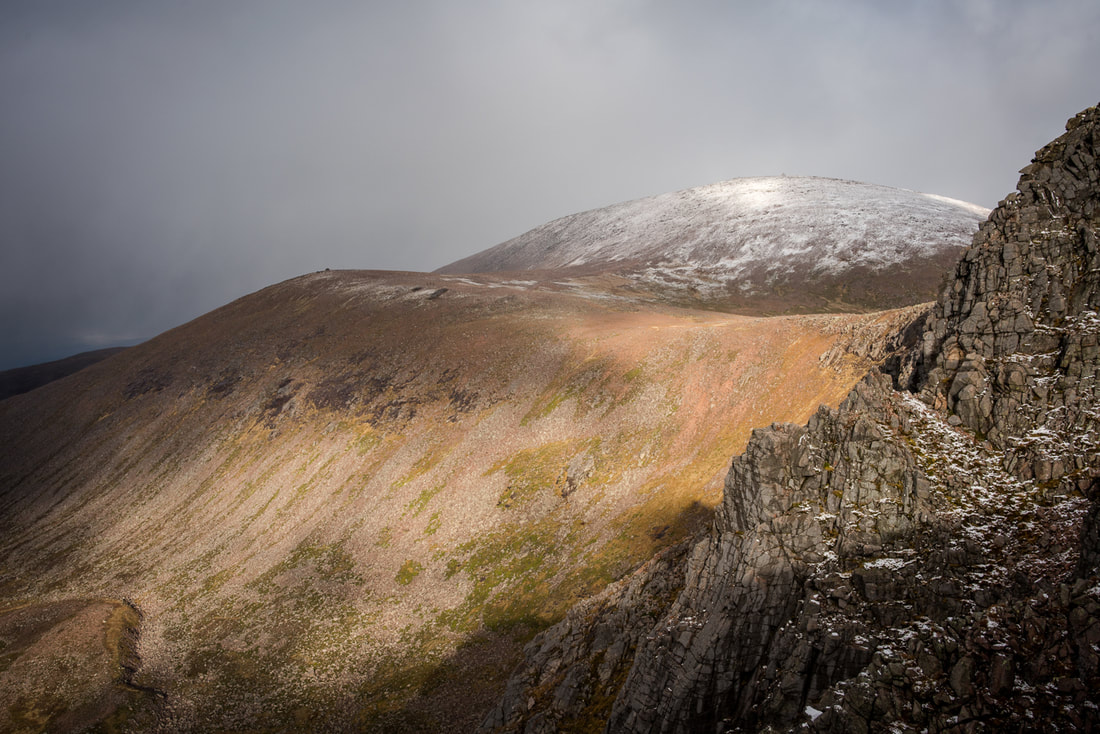 The first snows of winter at Cairngorm, Oct 2020 © David Lintern Forget Game of Thrones, 'winter is coming.' Beira the Goddess of Winter is coming! After Oidhche Shamhna (pronounced oy-cha how-na), Halloween, she begins her reign for the next six months, until Bealtainn at the beginning of May. Now, Beira is a cailleach (pronounced cal-yach or kayach), alternatively described as an old woman, wise woman, hag, crone, witch - and creator. Beira and her eight sisters lived at the very centre of the earth. Each day they worked tirelessly, hewing and mining rocks from the very centre of the earth, and placing them carefully into woven creel baskets on their backs. When the baskets were full, they made their way out of the centre of the earth, to the ocean. From there, each of the sisters took a different direction and strode off through the waters. Beira too, picked a direction and when she grew tired, she stopped and began unloading the rocks from her creel, until it was empty. Now, Beira wielded a mighty magic hammer - a bit like Thor's hammer - and with her hammer began shaping and carving the rocks into glens and mountains, lochs and corries. This land that Beira shaped with her hammer became Alba, or Scotland. When she completed her work, her woven white plaid which she wore had become quite grubby, so off she strode to the ocean to give it a good wash. She scrubbed it hard, whirling the dark waters around and around, at a place on the West Coast of Scotland we now call Coire Bhreachain, or Corryvreckan, which is one of the largest whirlpools in the world. When her plaid was white again, Beira lifted it out of the ocean and laid it carefully to dry across the tops of the mountains. The white lying across the mountain tops signified the coming of winter, and Beira's reign. Throughout winter, she takes her place at the highest mountain in Alba, Beinn Nibheis, or Ben Nevis, and from her mountain throne waits, and watches, for the first sign of the coming of her sister Brìde, or Bride, the goddess of summer. Always, Beira and Brìde quarrel, and always, Brìde triumphs for a while, and we have summer, while Beira rests, and then Beira triumphs and again we have winter. So, when you next look out at the mountain tops - perhaps to the northern corries of the Cairngorms - and there is snow, remember that it's Beira's white plaid and we are all under her reign as goddess of winter until the coming of her sister Brìde at Bealtainn. A huge thank you to writer and photographer David Lintern, who took the stunning image of Cairngorm with its first winter snow of this year. If you fancy improving your photography skills, he offers bespoke tuition and workshops (with or without wild camping!) around the Cairngorms and beyond. Have a look at his work here. If you'd like to hear more stories and folktales of Aviemore and the Cairngorms, join an upcoming short guided walk!
It's #FolkloreThursday and time to return to rowan trees! Every Samhain, or Halloween, when the veil between the human world and the fairy world is thinnest, and winter is approaching, the wives of Strathspey would drive their animals through the trees to help ward off evil and protect them for the season ahead. They'd do the same at Bealtainn, the beginning of May. Rowan trees are seen as powerful protection trees, keeping away evil. They were sometimes manipulated to grow into an archway that people and animals could pass through - particularly at thresholds, like the entrance to a garden or piece of land. This incredible rowan in Aviemore (above) has not one but two archways, and is on an old croft site. The Gaelic name for rowan is beautiful - caorann - and comes from the word caor, which means blaze. This could relate to the bright red berries, or perhaps the colour of the leaves when they turn to a blazing fire in autumn. (Caor is also the name given to the the little broken bits of peat which blaze really quickly and easily.) So, if you're passing a rowan anytime soon (especially on Samhain!), make sure you pass through it if you can, and if you can't, circle it three times sunwise (clockwise) for good luck! If you'd like to hear stories and folktales of Aviemore and the Cairngorms, join an upcoming short guided walk!
Popped to the Black Isle today to do some seaweed foraging, and as it's also a Thursday thought we'd have a little story from there... So, a good long while ago the fairy folk, sìthean, began to take pity on the people of Fortrose and Rosemarkie, toiling all around the Moray Firth just to get to Inverness. They decided they would build a bridge for them across the firth at Chanonry Point (better known for dolphin-spotting!) They began building the bridge, and as the days went by, people gathered to watch and give 'advice' and 'suggestions' for how the bridge should be built. Who knew there could be so many expert bridge builders on the Black Isle! The fairy folk tolerated this as long as possible, until, simply too annoyed to continue, they packed up and told the interfering locals to build the bridge themselves. And lo and behold, it was never finished. If you'd like to hear stories and folktales of Aviemore and the Cairngorms, join an upcoming short guided walk!
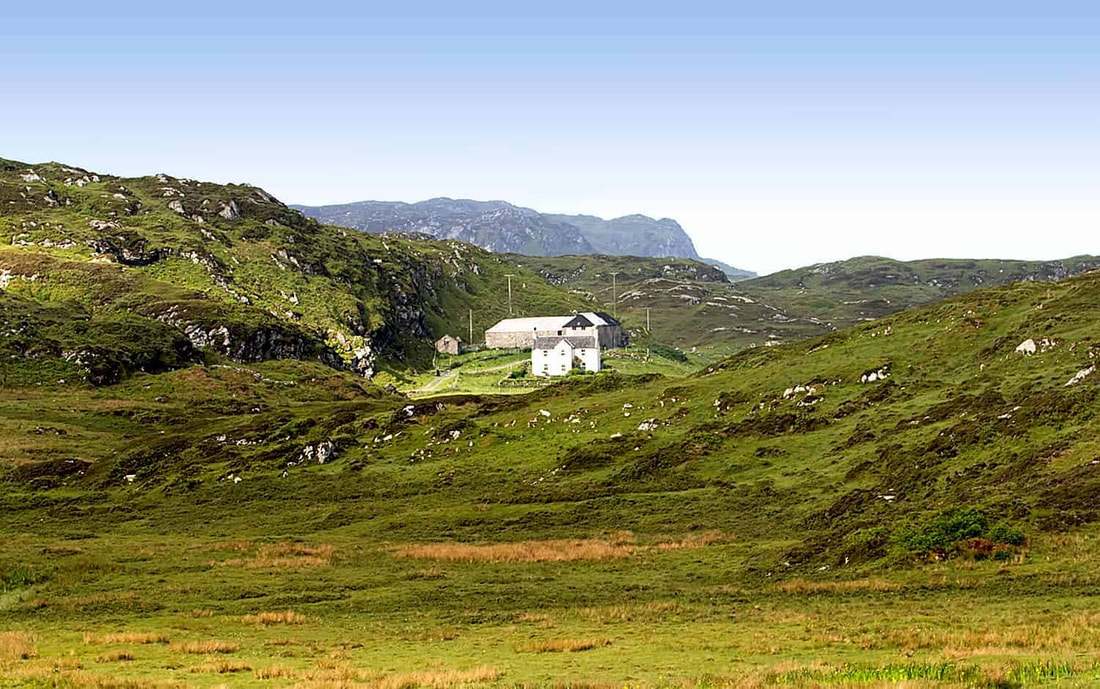 Balnahard farmhouse, from balnahard.com Was out in Colonsay last week, in stunning September weather, so wanted to share something from there! What could possibly link Rothiemurchus with a farmhouse on Colonsay? Why, brownies of course! The Highlands is full of fairy and spirit creatures of many kinds, including the helpful but mischievous sprites, brownies. They're also known as broonies in Scots and brùnaidh in Gaelic. Brownies live in large estate and farmhouses all over the Highlands and, while everyone sleeps, they help out with chores and general fixing jobs, including at Baile na h-Àirde farmhouse, above (now home to Colonsay Wool Growers, have a look! They dye yarn with plants picked from the island, including the by-products of the Colonsay Gin's distilling process). There's a stone nearby with a cavity where milk, or sometimes cream, is poured to feed and keep the brownie happy - though I didn't find it! Once you've poured in the cream for the brownie, you must not look back... This brownie was fed regularly right up until the early 1900s. Closer to home in Strathspey, the old Doune of Rothiemurchus also had a resident brownie, who made such a racket through the night, clattering pots and pans, that the laird became angry and shouted at the brownie, who took a huff and was never seen to help out again. Some years later the new Doune was built, a short distance from the old house. But, if you put your ear to the mound where the old Doune was, you may still hear the faint sound of clattering pots and pans. 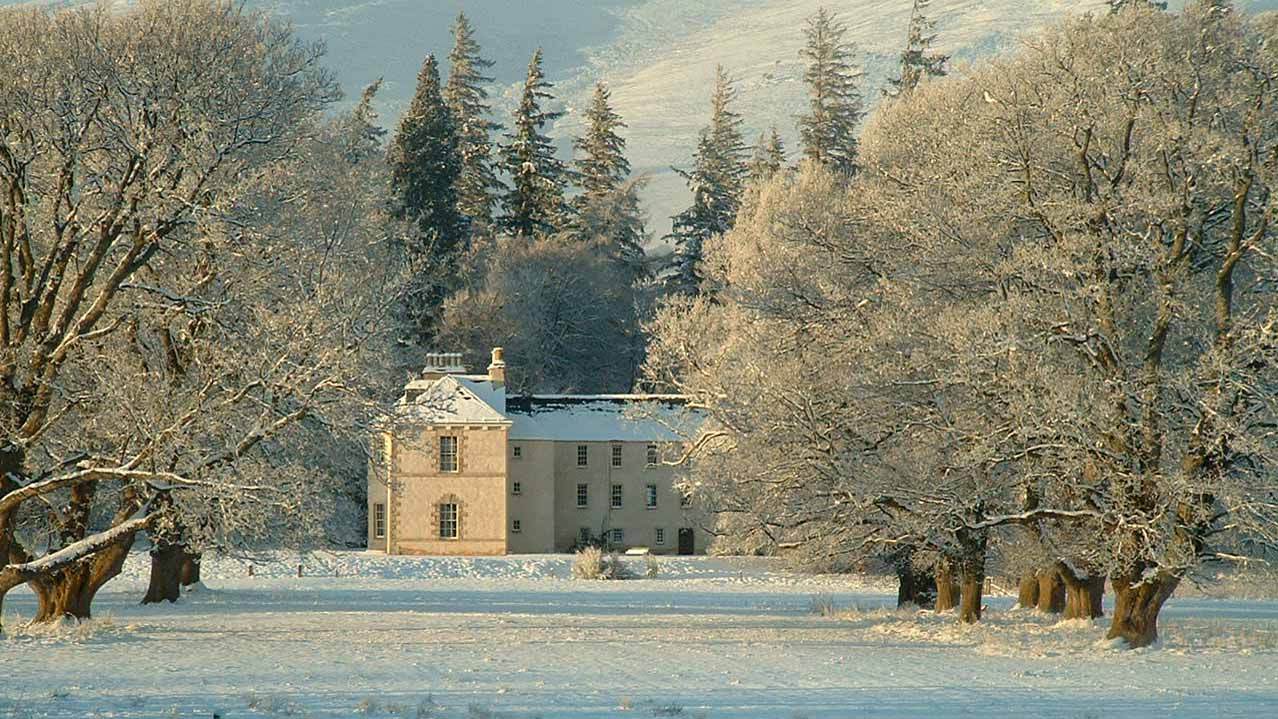 The Doune of Rothiemurchus, from rothiemurchus.net If you'd like to hear more stories and folktales of Aviemore and the Cairngorms, join an upcoming short guided walk!
We're travelling a bit for #FolkloreThursday today. Here's Jaulian, a world heritage site at Taxila in Pakistan (took this pic almost exactly 10 years ago so #ThrowbackThursday too!). Jaulian is an ancient Buddhist monastery, and one of the earliest universities in the world. Here they found fragments of manuscripts written on birch bark, which was common practice across Gandhara, an ancient region which stretched across modern-day north-west Pakistan and eastern Afghanistan. Taxila was one of its capitals. A well-known example is the Bakhshali Manuscript, unearthed near Mardan in 1881 by a farmer, and was a collection of 70 sheets of birch bark, inscribed with the mathematical concept of zero - possibly the earliest written recording on the Indian subcontinent. It's been variously dated to somewhere between AD200-900. Not bad for a bit of birch bark! Himalayan birch (Betula utilis) is different to the species which grow here in the Highlands (usually Betula pendula and Betula pubenscens), but their bark can also be used for writing or inscribing on. Just love a bit of birch! If you'd like to hear more stories and folktales of Aviemore and the Cairngorms (and indeed more further afield!), join an upcoming short guided walk!
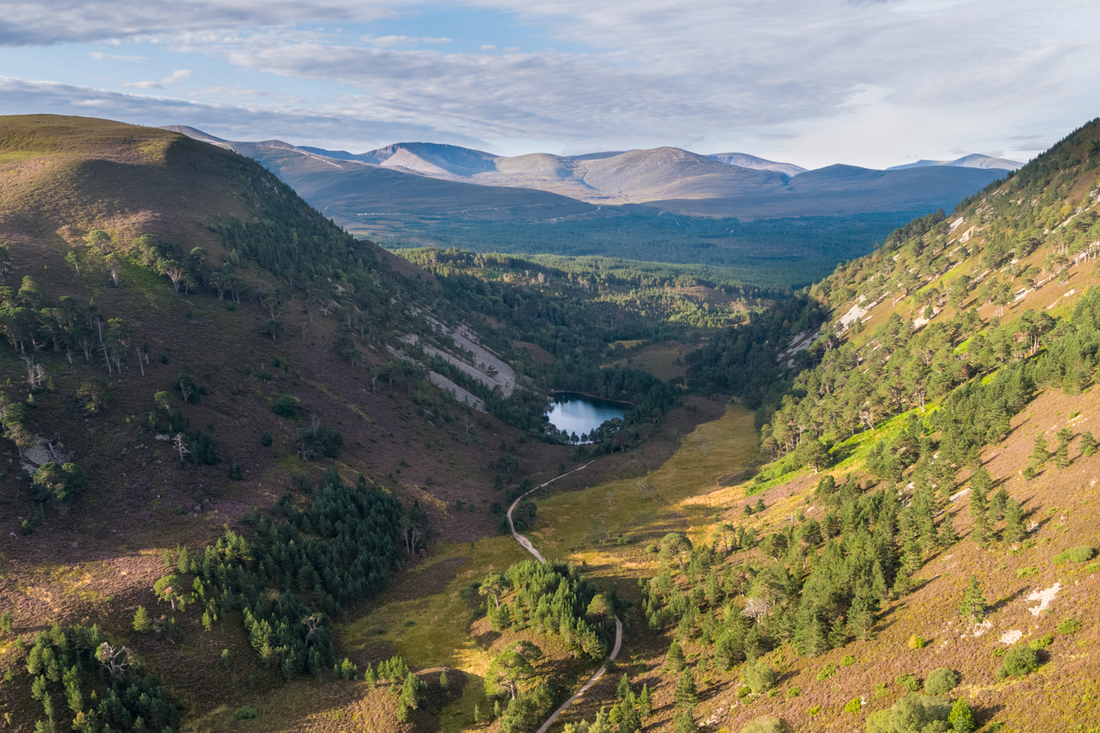 Lochan Uaine in Ryvoan Pass, looking towards the Northern Corries © James Shooter/scotlandbigpicture.com It's #folklorethursday! Here's the well-known An Lochan Uaine, the Green Lochan, near Glenmore. You may have heard of the fairy hill overlooking the loch, and the fairies who wash their clothes there, turning the waters the stunning, mysterious green colour. Well. That was all invented by locals to disguise the fact there was illicit whisky distilling going on up the hill... the remains of the still are still there - and of course this is on the Rathad nam Mèirleach, the Thieves Road (noted last week at Loch Gamhna). Fairies or no, mischief was in the air! If you'd like to hear more stories and folktales of Aviemore and the Cairngorms, join an upcoming wee guided walk!
It's #folklorethursday! Here's Loch Gamhna at Rothiemurchus with Loch an Eilein in the distance. Loch Gamhna, or Loch of the Stirk (yearling heifer or bullock) is so called after a group of cattle rustlers resting by the loch discovered their pursuers were hot on their heels. Tying stones to the cattle's horns, they drove them into the loch, hoping the poor cattle would drown and their indiscretions would go unnoticed. Unfortunately for them, just as they were explaining how honest they were, one of the stolen stirks swam ashore. Rathad nam Mèirleach, the Thieves' Road, runs right past both lochs and towards Ryvoan pass in the far distance... If you'd like to hear more stories and folktales of Aviemore and the Cairngorms, join an upcoming guided walk!
|
AuthorSarah Hobbs - read more on the About page. Archives
July 2023
Categories |
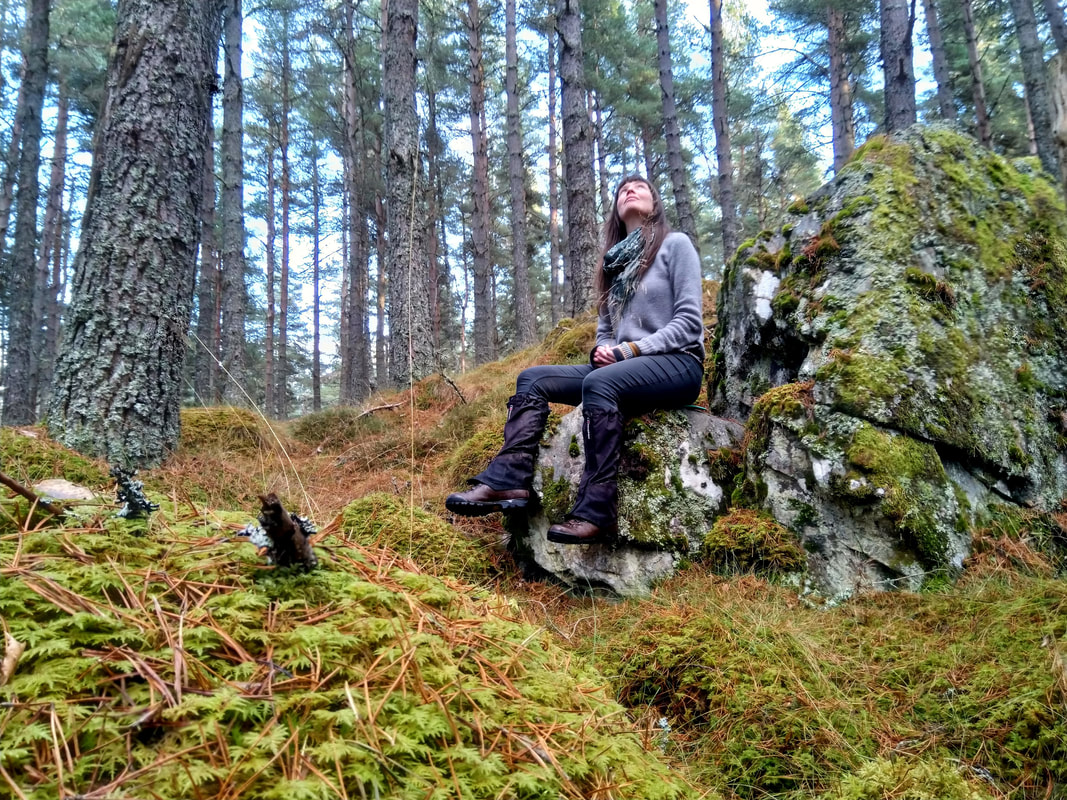
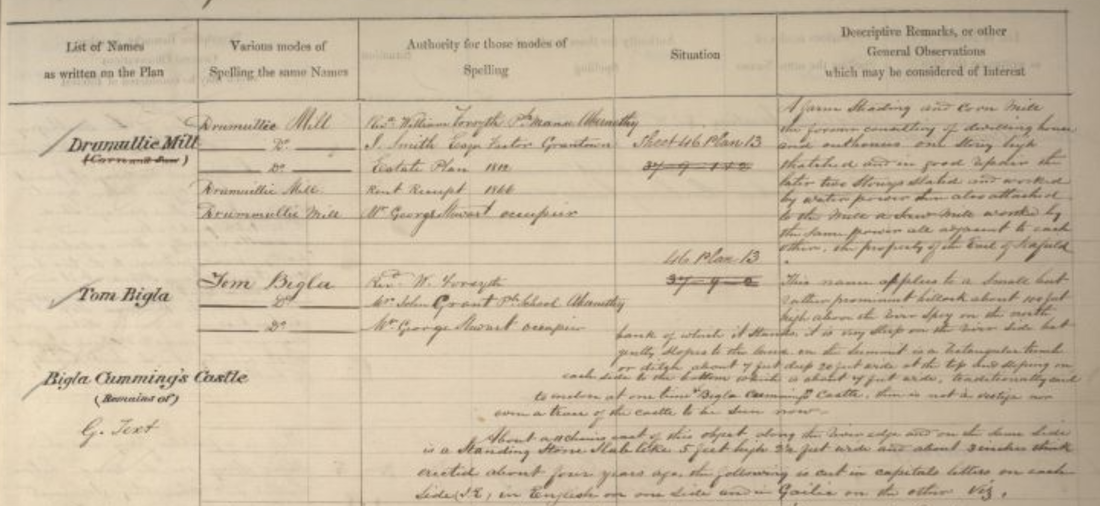
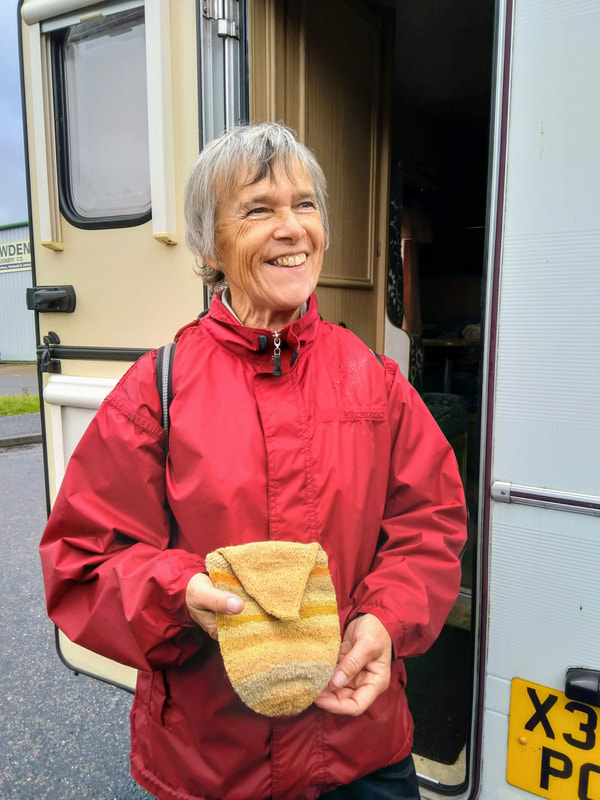
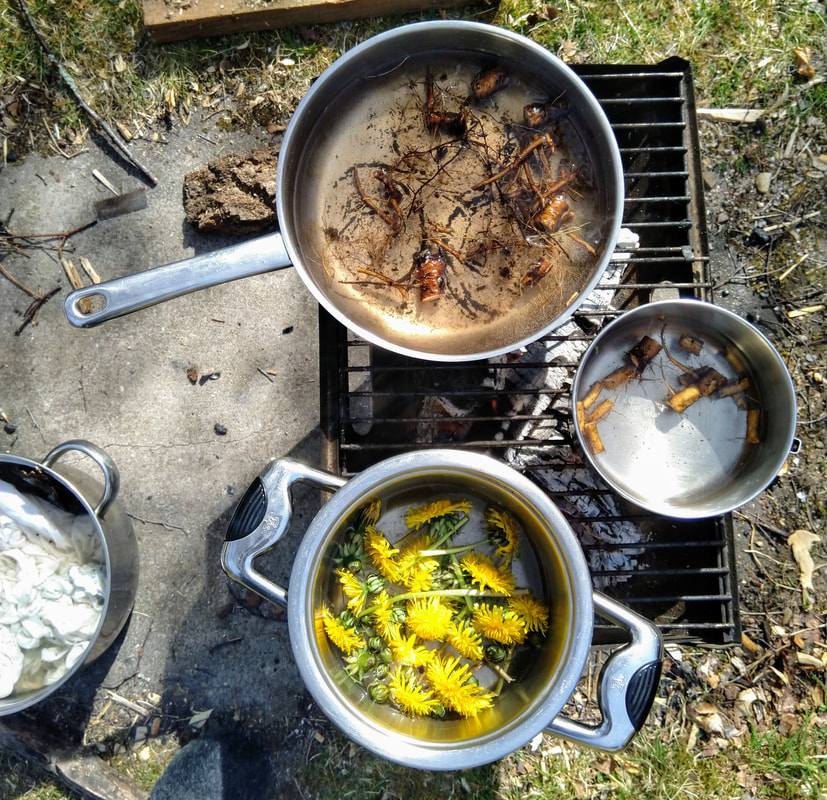
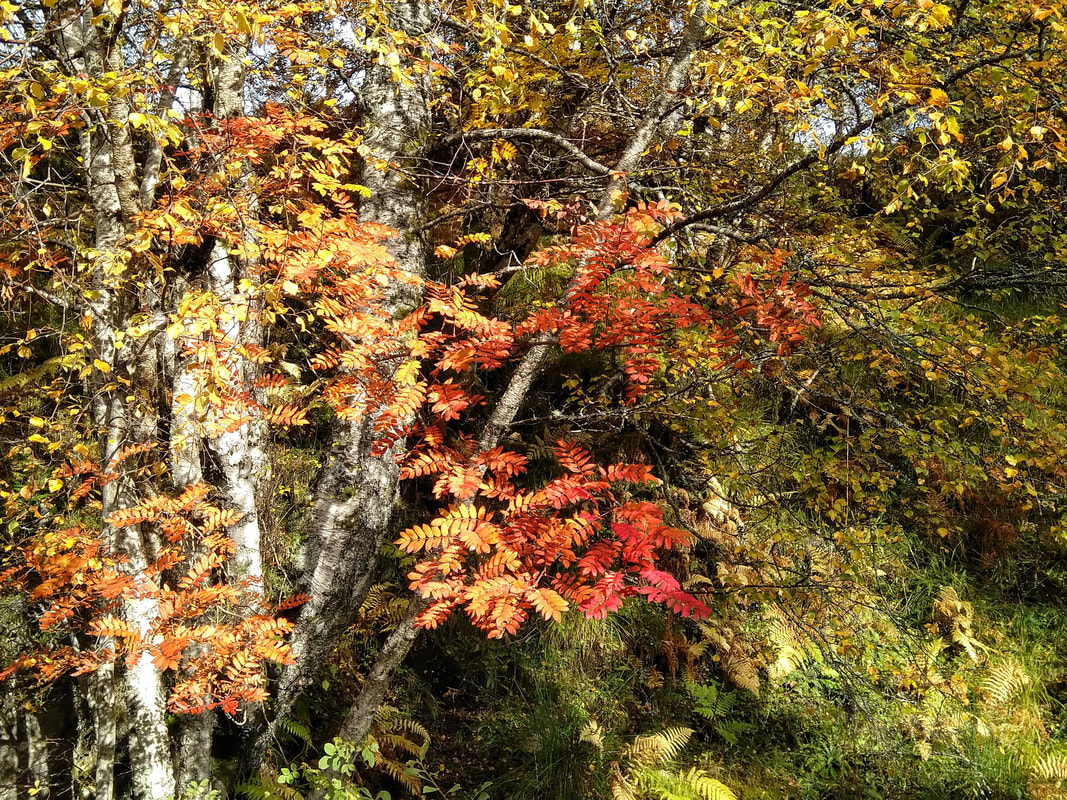
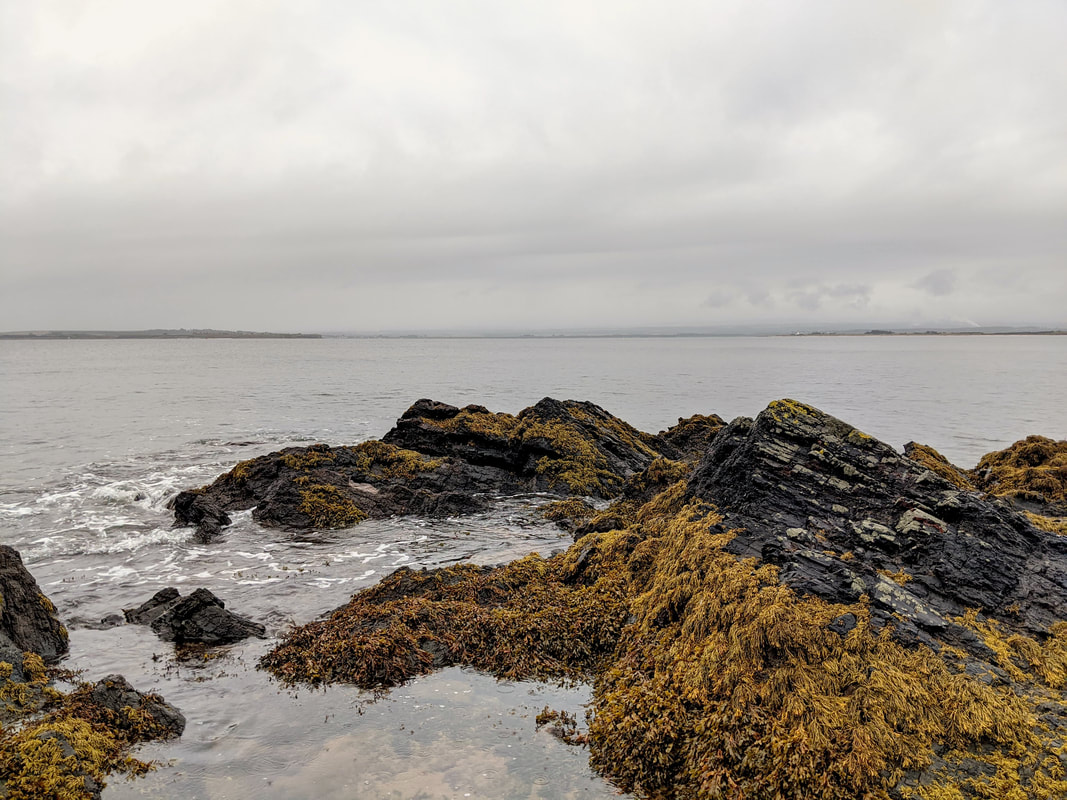
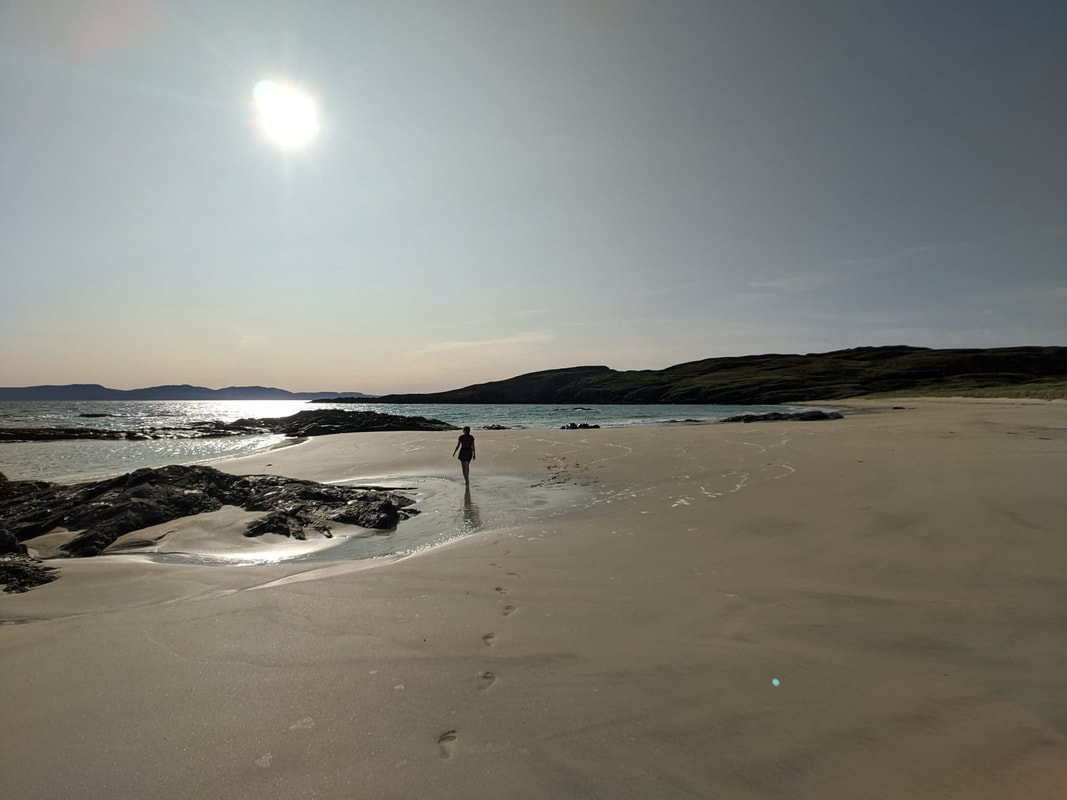
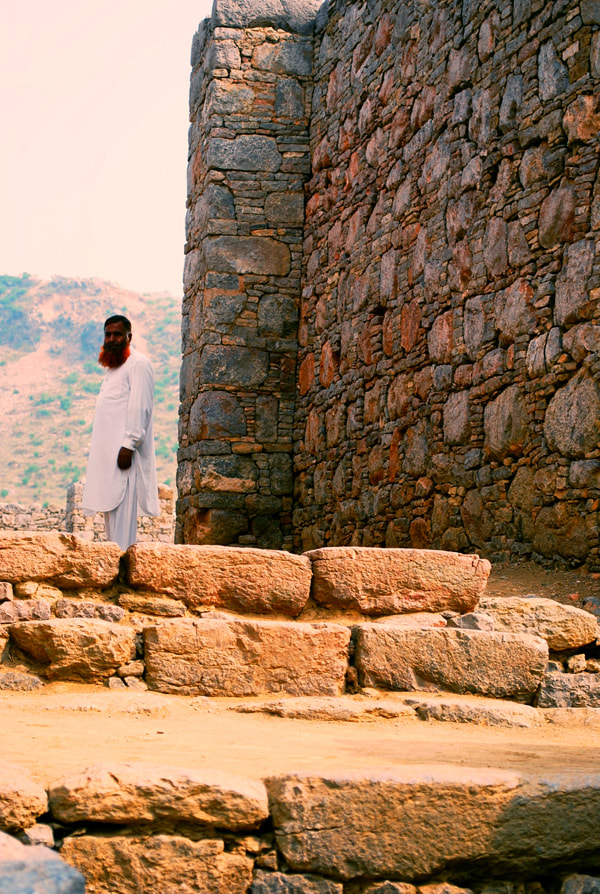
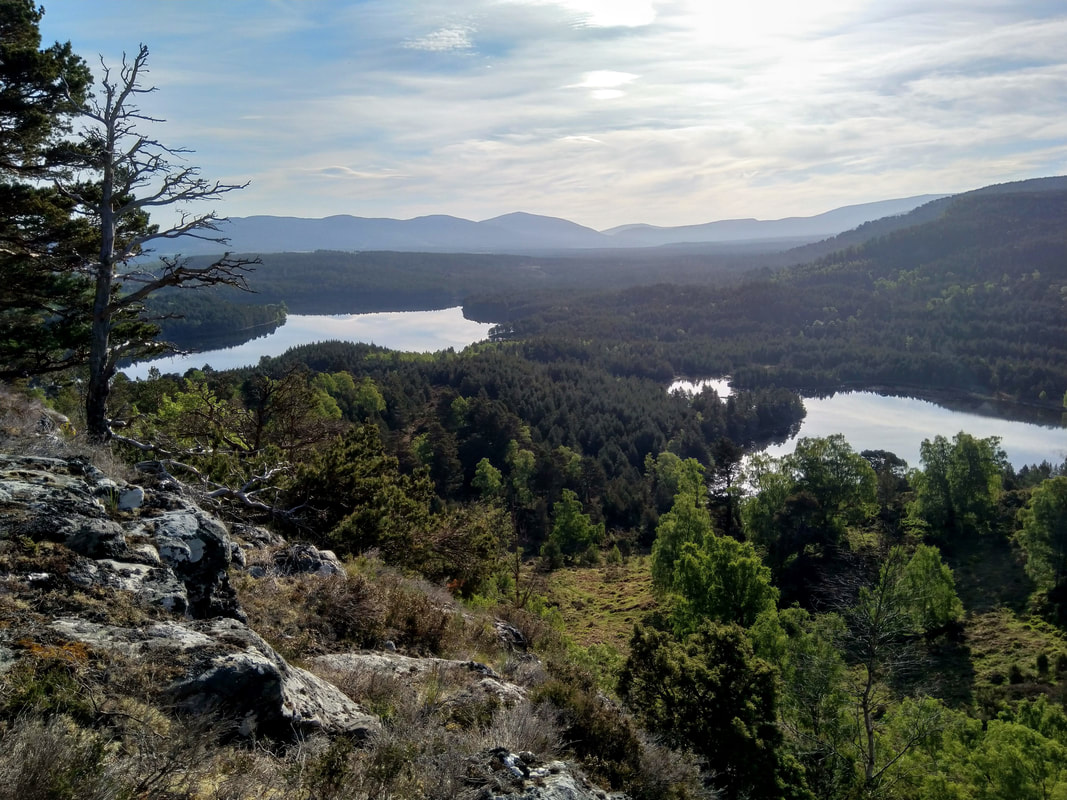
 RSS Feed
RSS Feed